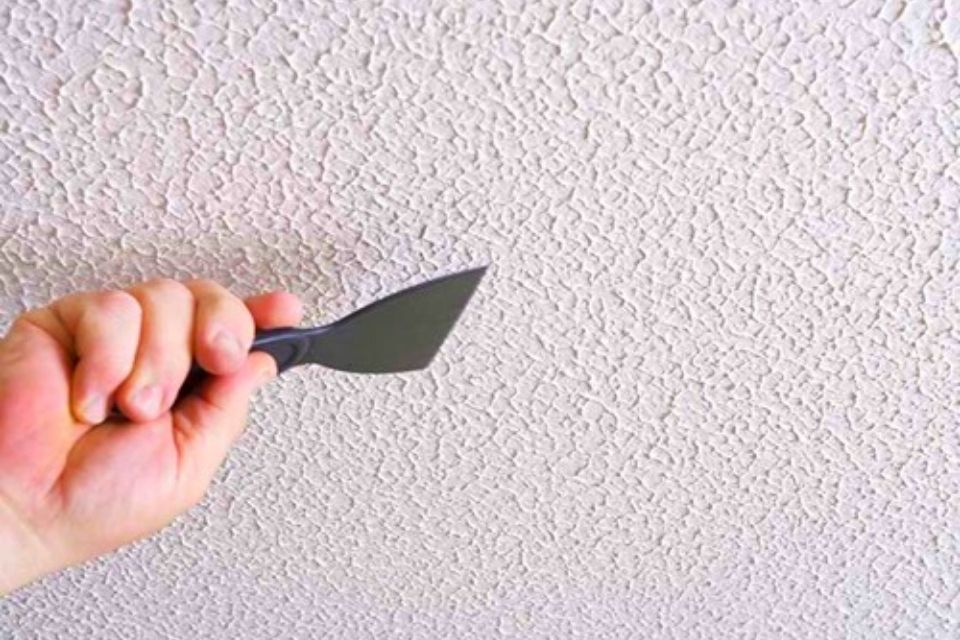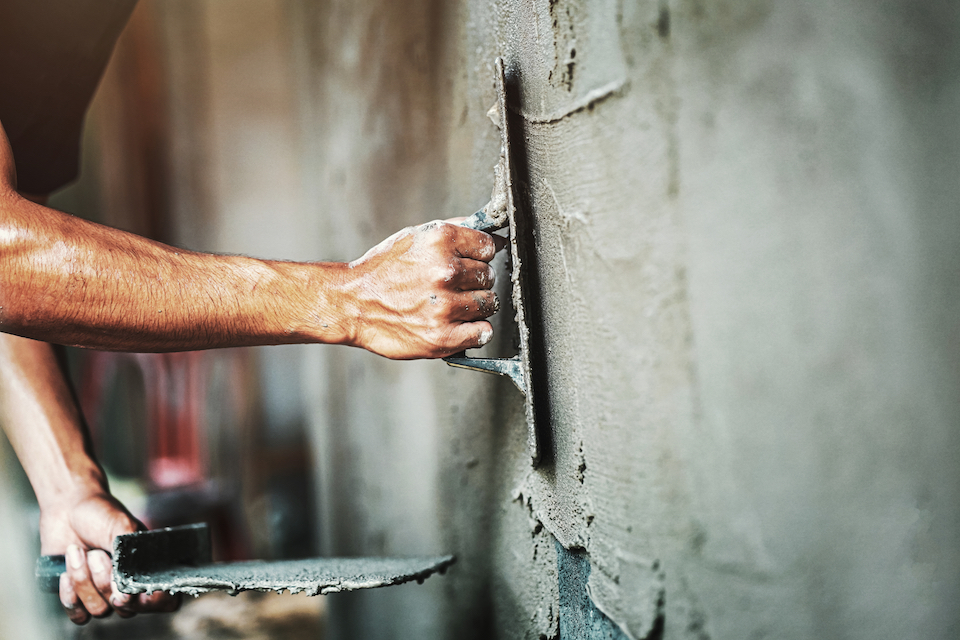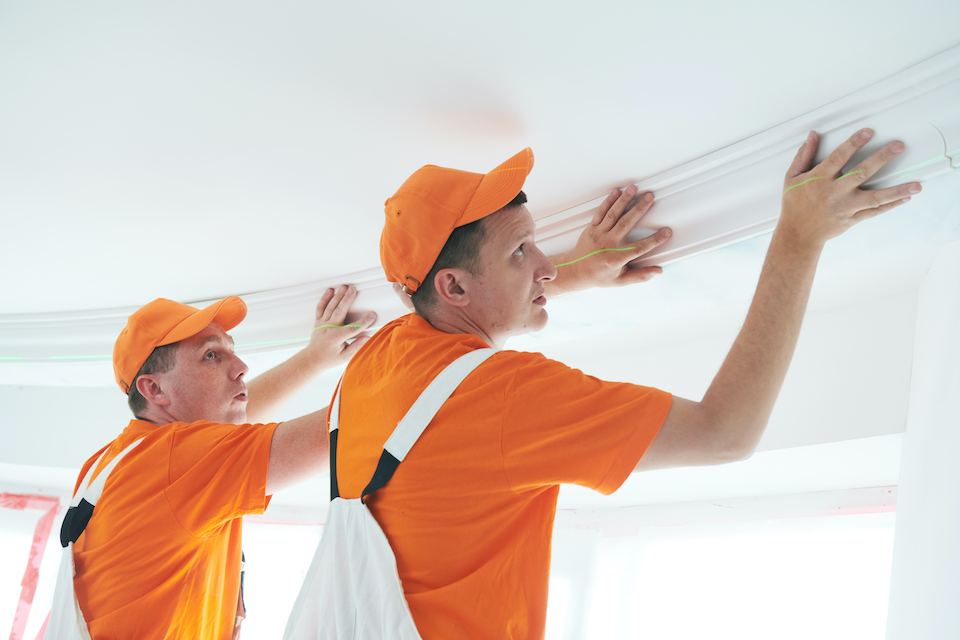How Much to Remove Artex Ceiling?
When did Artex become popular?
The once very popular Artex coating was used in abundance throughout the 1960s, and 1970s across the UK as a decorative coat to ceilings and walls, most commonly to form decorative peaks on ceilings.
Some Artex products have been discontinued for public use due to the original product containing a harmful substance called Asbestos.
Why is it no longer used as much?
Asbestos can cause severe lung and respiratory diseases if inhaled. Although its use was banned in 1999, asbestos is still to be found in many buildings built or modified in the UK before 2000.
However, some homes and buildings still have the now discontinued Artex substance on the ceilings and walls, which will now need to be removed for a variety of reasons from health and safety concerns to aesthetic issues such as cracking or flaking.
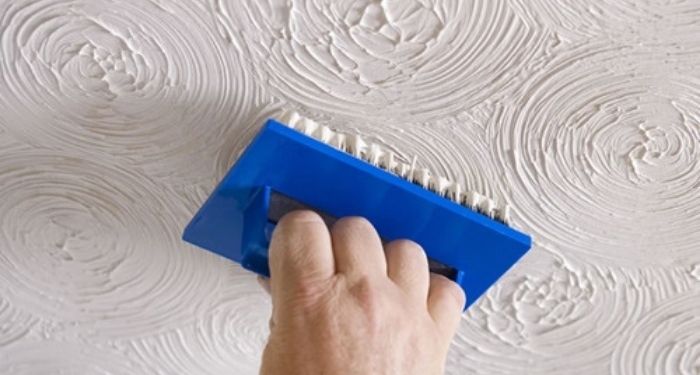
Because Asbestos is a very hazardous material to work with, it should only be dealt with by professionally trained tradespeople.
So, what options are there to remove Artex?
There are two options for dealing with Artex and ensuring its safety. The first is to completely remove the Artex from the walls to ensure that there is no Asbestos within your home, however, this can be expensive and time-consuming.
The second is an Artex coating and seal, which will smooth over the Artex substance to give you fresh walls, but this is only an option if the Artex contains no Asbestos following an Artex Sample Survey.
To give you an idea about the average durations and costs, take a look at the table below.
Artex Removal Prices
What can affect the overall costs of removing Artex?
Now, these prices do vary depending on a few factors. Of course, the bigger the surface area of the Artex, the longer and more expensive the job will be, so take this into consideration if you have large patches of Artex.
Also, consider the location of your home as different regions of the country pay more for tradespeople than others, mainly due to the population density and the cost of living in some areas.
For example, you're likely to pay higher rates in London and Manchester than you are in small towns and villages.
In the next few sections, we're going to delve deeper into the supply costs, the tradesmen costs and any additional costs that make up your overall Artex removal cost.
| Job Description | Duration | Material Cost | Labour Cost | Average Total Cost |
|---|---|---|---|---|
| Asbestos Sample Survey | 1 Day | N/A | £200 | £200-£250 |
| Artex Sealing/Coating | 4-8 hours | £150-£250 | £150-£250 per day per labourer | £225-£500 |
| Artex Removal | 1-5 Days | £250-£500 | £200-£300 per day per labourer | £400-£1,950 |
What are the Supply Costs of Removing Artex?
Tradespeople will require certain equipment and supplies to either remove or seal and coat your Artex ceilings or walls.
Typically, the removal of Artex surfaces will require steaming, scraping and cleaning tools, along with durable refuse sacks to dispose of the removed Artex safely.
Now, the coating and sealing of Artex will require different supplies depending on which of the two possible ways of coating and sealing Artex you decide to opt for.
Two Sealing Options:
- Plasterboard to board over the Artex
- PVA to seal the Artex surface
The first is plasterboard to board over the Artex ceiling or walls, which is then covered in many layers of plaster to ensure a smooth surface.
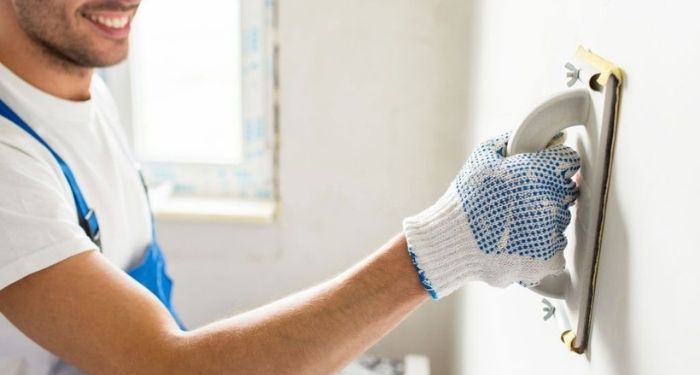
The second option is to use PVA to seal the Artex surface, before simply plastering over for a smooth finish.
Now, the contractor you enlist to carry out the job, whether it's a removal or a sealing, will be more than happy to purchase any supplies on your behalf.
However, you can usually get some great savings by shopping around for it yourself, simply because the contractor will have less time to hunt for deals and offers.
It would be best to speak with them first to ensure you know what supplies the tradesman will need and take their advice on specific products where necessary.
To illustrate the costs associated with the supplies only, we've created a table to outline the different supply costs below.
Cost of Supplies
| Job Description | Average Total Cost |
|---|---|
| Removing Artex on One Ceiling | £100-£150 |
| Removing Artex on Entire House | £300-£500 |
| Coating and Sealing Artex on One Ceiling with Plasterboard | £100-£150 |
| Coating and Sealing Artex on Entire House with Plasterboard | £300-£350 |
| Coating and Sealing Artex on One Ceiling with Plaster | £100-£125 |
| Coating and Sealing Artex on Entire House with Plaster | £275-£325 |
Why Might You Want to Remove Artex
There are many practical and aesthetic reasons why homeowners choose to remove Artex from their walls or ceilings. Whether you’re planning a renovation or simply want to modernise your home, here are some of the most common motivations for Artex removal:
Asbestos Risk
Many Artex coatings applied before the year 2000 may contain asbestos. If the surface is damaged or disturbed, it can release harmful fibres into the air, posing serious health risks so it needs to be either sealed or removed.
Outdated Appearance
Artex may have been a popular decorative finish previously, but in modern homes many homeowners opt to remove it in favour of a smooth, contemporary look that better suits modern interiors.
House Renovation Projects
When undertaking major renovation work, such as replastering, rewiring, or ceiling alterations, removing Artex can create a clean, blank canvas which is easier for upgrades.
Easier Maintenance
Textured surfaces like Artex can easily trap dust and cobwebs, making them more difficult to clean and repaint. A flat, smooth surface is much easier to maintain and redecorate.
Repairing Cracks & Damage
Over time, Artex can crack, peel, or degrade. These imperfections can make a room look tired and may also hide issues underneath, prompting many homeowners to opt for complete removal to fix the issue.
What are the Additional Costs of Removing Artex?
Here is a list of some additional cost you might encounter when removing Artex:
Artex Sample Survey
An Artex Sample Survey is carried out to test the Artex in your home to see if it contains Asbestos or not.
This survey costs £200 in total, but it may not be necessary to have carried out based on a few factors.
Any Artex that was applied or modified before 2000 may contain asbestos. This means that the surface should be tested before any work starts.
If found, the asbestos will need to be removed.
Artex Sample Surveys are carried out to ensure the health and safety of everyone in your home. Do not have Artex walls or ceiling sealed or coated without checking if they contain harmful substances. The consequences could be fatal.
If the survey's fee of £200 doesn't meet your budget, you can buy online testing kits which are a lot more affordable at around £30 per kit. While these kits aren't as accurate as the professional tests, they are better than no test at all!
Decorating
Once you've had your Artex either removed or sealed and coated, you may want to give your room a new lease of life by decorating.
Some fresh paint and new wallpaper can really transform your space, and the old fashioned Artex will be but a distant memory.
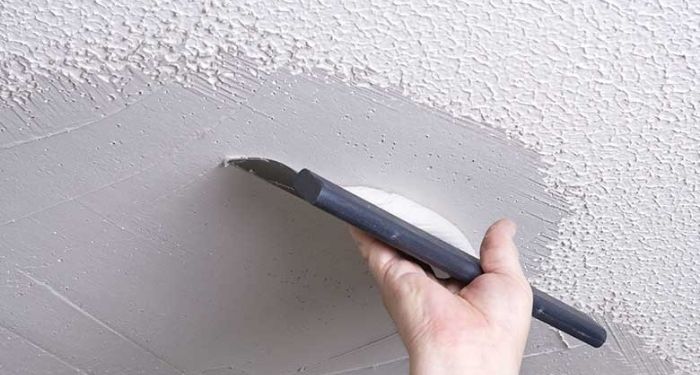
It doesn't cost much to have your rooms professionally decorated, with a typical 13ft x 10ft room costing around £200-£300 to decorate, depending on where you live.
Decoration takes about two days in total, and with the addition of some new fixtures and accessories, your room will be completely transformed overnight.
Of course, these prices differ depending on your rooms' size and complexity, but if you want your entire home decorating, there are some fantastic savings to be enjoyed.
Regional Cost Differences
The price of trade work differs depending on where you live in the UK.
Big cities like London and Manchester naturally attract higher sums due to the cost of living in the areas, and the population density providing more customers to tradespeople.
On the other end of the spectrum, in smaller towns and villages, there are fewer customers and more competition between labourers to be competitive with their pricing to win jobs.
This is standard across all industries, and if you live in these areas, you probably won't know much different.
We're going to explore the cost of labour for Artex removal in a little more detail in the next section.
Tradesperson Costs for Artex Removal
Removing Artex takes much longer than sealing or covering Artex, mainly because extra precautions must be taken for health and safety.
It is much harder to work to remove the Artex substance completely. Of course, once the Artex is removed, its then a case of smoothing over the surfaces with plaster, which only adds time to the duration of the job.
The typical tradesman will charge anything from £200-£300 per day, per labourer. This means that if it's a particularly tough job due to your rooms' size or shape, they may need to work as a two-person team, instead of one person. However, this will all be clear when you have the job quoted by the contractors.
We're going to look at the time it takes to remove or seal and coat Artex ceilings and walls in the next section which will help you work out how much you're likely to pay for contractors to complete this job.
Of course, please consider the points we've raised regarding your home's location and the impact that can have on the cost of contractors.
A good guide is to use the upper end of the cost scale given for big cities like London, and the lower end scale for more rural areas, with anything in the middle looking at around the national average.
How Long Does It Take to Remove Artex?
The time it takes to remove Artex can vary quite a great deal from a few hours to the best part of a week, and it's all down to different time affecting factors.
Factors such as:
- Room Size
- State of The Artex
- Job Type - Sealing or Removing
- Clean Up
The first glaring factor is the size of the space you need Artex removing from.
A small box room will take just a few hours to a day, but an entire home will take much longer, and sometimes as long as a week.
This will, of course, affect the price too, and it's something that the contractor will be able to give you a clearer idea of at the time of quoting.
Another time affecting factor is the state of the Artex, as it's much easier to remove Artex that is already cracking, flaking and showing the wear of time.
In contrast, any Artex that is still holding firm will take a lot longer to remove. The clean up after Artex removal can take quite a long time, as the room can become quite dusty and messy, something which the contractor wants to be cleared in full and all the Artex bagged away before leaving.
Now, coating and sealing Artex ceilings and walls are much quicker, regardless of the method used. Scrapping and chiselling away at the Artex is quite a time and energy-consuming, so where possible, it's more cost-effective to opt for a coat and seal method.
This takes a few hours per surface. Of course, the larger the surface area, the longer it will take to complete, and if you're using plasterboard to conceal the Artex, any complexly shaped rooms will take even longer again.
It’s vital to know how to remove Artex safely, especially if it contains asbestos, to protect your health and avoid costly mistakes.
Artex Removal: What You Need to Know
Artex can pose serious health risks if it contains asbestos. If disturbed, asbestos fibres can become airborne and, when inhaled, may lead to severe lung conditions over time. For this reason, it’s essential to check whether any Artex in your home contains asbestos and consider removal if needed.
When hiring a professional, it’s important to understand the options available. In some cases, if the Artex is in good condition and doesn’t pose a risk, a contractor might recommend encapsulation rather than removal. This involves sealing the surface to prevent any fibres from escaping. This is a faster and more cost-effective alternative to full removal.
However, if removal is required, there are a few things to consider. Think about:
- Which rooms are affected
- How long the job will take
- Whether to remove Artex from the entire property at once
Removal can be disruptive, and you may need to leave your home for a few days during the process, especially if asbestos is involved.
In cases where asbestos contamination is extensive, additional work like deep cleaning or even partial strip-outs may be needed. Be sure to get a clear breakdown of the scope of work, methods used, and full costs before hiring a contractor. Comparing multiple quotes is always recommended to ensure you’re getting the best service at a fair price.
Types of Artex Removal
Here are some different ways that you can remove Artex:
Scraping Artex Cost
The first type of Artex removal is the complete removal of the Artex substance by any means necessary.
Popular methods are either steaming to loosen the substance for it to be scraped off easier, or straight up chiselling and scraping.
This is the only method for Artex that contains Asbestos, and the likelihood is that your Artex does contain Asbestos.
If you're unsure, it's best to either test a sample using the Artex Sample Survey test that costs £200 or by using a home testing kit that costs much less at around £30 and is available online.
You shouldn't coat and seal Artex unless you are completely sure it contains no Asbestos, as the consequences could be drastic.
Pros:
- This completely removes the Artex
- Only method for proven asbestos Artex
Cons:
- You need an Artex test before you commence the work
Artex Chemical Removal Cost
Instead of using the steaming and scraping method, you can buy chemicals that breakdown the Artex and make it easier to scrape from the walls. This is called X-TEX, and it has become a very popular product.
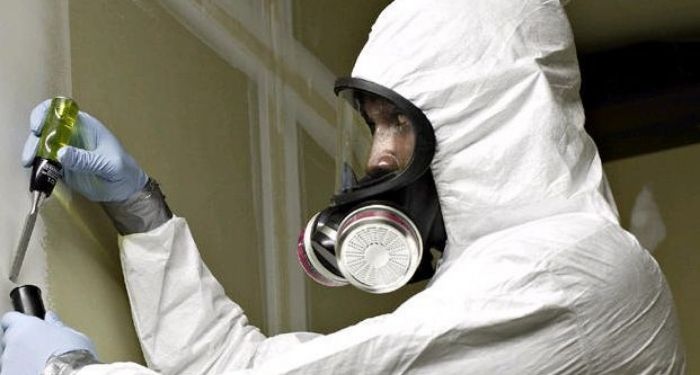
It's water-based, non-toxic and non-flammable making it a very safe option despite it being a chemical. Simply apply the X-TEX liberally to the walls with a paintbrush, wait for it to loosen the Artex and then easily scrape it away.
Pros:
- Chemicals make it easier to scrape the Artex from surfaces
- It's a safer method despite using chemicals
Cons:
- You need an Artex test before you commence the work
Plasterboard Sealing and Coating Cost
If your Artex doesn't contain any Asbestos after checking a sample of the substance, you can seal and coat it instead, to give you a smooth and clean surface.
There are two methods for this, the first being plasterboard sealing and coating. This is where plasterboard is fixed in place over the Artex and is held in place with plaster.
Plaster is then coated over the plasterboard to give it a wonderfully smooth finish, ready to be decorated in whichever style you like.
Pros:
- Great option if your Artex contains no asbestos
- Gives a great smooth finish
Cons:
- Not a great option if your Artex does contain asbestos
Plaster Sealing and Coating Cost
This coating and sealing method involves coating the surface in many layers of plaster until the newly plastered surface is completely free from any blemishes and is completely smooth.
This is usually the preferred method of coating and sealing Artex, as it doesn't involve any big pieces of plasterboard to fit into the home.
It's also a lot quicker, so the tradesman can have a few rooms completed in quick succession. Before any plaster can be added to the Artex, a layer of PVA will be added first to act as the sealant and give the plaster something to hold.
Pros:
- Great option if your artex contains no asbestos
- Gives a great smooth finish
- Quickest of the options
Cons:
- Not a great option if your artex does contain asbestos
FAQs
Q: How to cover Artex wall without the need for plastering?
A: You can use plasterboard pieces to cover and seal an Artex surface and apply plaster to that, which removes the need to plaster over the Artex itself.
This is a popular method to coat and seal Artex surfaces, and if this is the method you wish to have done, make sure your contractor knows this at the first opportunity.
Q: What is the best way to remove Artex?
A: X-TEX has become the preferred option for removing Artex in recent years, with the wet chemical substance making scraping the Artex easier and safer, as it stops any possible Asbestos particles from being plunged into the air in the room.
You can pick up a 2.5L tub of X-TEX from any good DIY store, and that will be more than enough for a large surface of Artex.
Q: Can you remove Artex yourself?
A: Artex needs to be removed as it was typically used with Asbestos. Asbestos is a dangerous substance that can cause lung and respiratory illnesses, so it's best to leave this job to professionals.
Contractors will most likely use Personal Protective Equipment when they remove or work with Artex surfaces, as Asbestos has a habit of breaking down into a very fine powder and hanging in the air, which can be dangerous when inhaled.
Q: Is Artex illegal to use now?
A: You can still buy Artex quite freely in DIY stores, and even though it's fallen out of favour for other substances, it is now safe to use.
This is because the use of Asbestos in any product, including Artex, has been banned since 1999. So any new Artex purchased from a DIY store will now be asbestos free in the UK.
Q: Why was asbestos used in Artex?
A: Asbestos was added to Artex as a reinforcing material to improve its strength, durability, and fire resistance. When mixed with Artex, asbestos fibres helped the decorative coating adhere better to ceilings and walls and made the finish more crack-resistant once dry and fully cured.
At the time, asbestos was widely used in the construction industry due to its affordability and practical benefits. However, it was later discovered that asbestos fibres are highly dangerous when disturbed and inhaled, leading to serious health conditions such as asbestosis, mesothelioma, and lung cancer.
Although Artex containing asbestos was banned in the UK in 1999, many older homes may still have it present on walls and ceilings. If the material is intact, it may not pose an immediate risk, but any drilling, sanding, or removal work should always be carried out by a trained professional.

